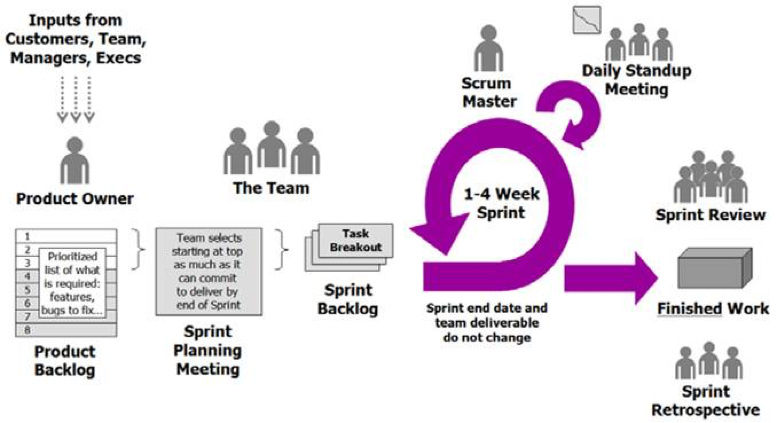After undergoing this coaching workshop, attendees will be confident of applying Agile thinking and Scrum framework on projects.

Target Group and Prerequisites:
Architects, Program Management, Project Management, Product Owners, Scrum Masters, Product Managers, Developers, and Testers, Business Analyst, UI/UX and other roles on the project will benefit from this workshop. Since scrum teams are cross-functional, hence having cross functional group of people together for training will bring very interesting discussions which could benefit everyone.
Outcome of this workshop:
By the end of this course, attendees will be able to know:
- The essence of Agile which is definitely not limited to Scrum or XP
- How to become self organised team within a short span of time
- How to apply iterative approaches in order to go to the production sooner (1-4 weeks)
- Participants will understand and know how to solve the real world problems which keep happening in majority of the organisations
- Post this workshop, participants can apply key Agile Management practices to improve effectiveness of business solution and of Agile teams
- Participants learn Why, When and How to use Agile Engineering/Agile Testing practices effectively to improve quality of deliverables
- Participants can apply Agile estimation and release planning through story points technique to better forecast their work
- How to structure your teams to facilitate collaboration, and self-organization to maximize business value to the clients
- Using Agile empirical metrics to measure progress and quality
- Using Big Visible charts as information radiators
- How to set-up successful distributed agile teams and address communication, trust, and quality issues
Format of Workshop:
Participants get to understand core principles and in-depth Agile/Scrum/XP framework in the form of videos, group discussions, exercises, interactive sessions, innovation games. Following topics in detail will be addressed in 2 days:
Why and What is Agile
- Why different organizations are adopting Agile
- Agile Values and Principles
- Agile vs Traditional Approach
- Business outcome of using Agile
How to start an Agile project and what to expect
- Agile discovery session and its expectations from participants
- Concept of Team norms and charter
- Sprint zero
- Initial team velocity
Scrum framework in detail
- Scrum framework in a nut-shell
- Scrum Roles, Ceremonies and Artifacts
- Sprint Planning
- How to prepare for Sprint planning, pre-planning
- How to facilitate a Sprint Planning
- Velocity and Commitment driven planning techniques
- Definition of Done and Task estimation
- Daily Stand-up
- Why and How
- How to optimize stand-up and make it effective
- What are the anti-patterns
- Sprint Review
- Facilitate a sprint review and its effectiveness
- Patterns and anti-patterns
- Sprint Retrospective
- What, why and how
- Different styles of doing retrospective
User Stories
- What Is/Not a User Story and 3C/INVEST model
- How to break down big requirements into smaller user-stories
- How to validate requirements using acceptance criteria
- Writing acceptance criteria with examples
- Who and When to write stories with tips
Product Backlog Refinement
- What, Why, When and How to conduct backlog refinement
- How to create backlog of a large project
- Story mapping and/or process maps – how to use them
- Definition of READY and its consequences to team and Product Owner
Agile Estimation and Planning
- 5 levels Agile Onion Planning
- Story Point Estimation and How to do it using planning poker
- Why NOT to use hours while estimating and planning
- How to do estimation at Sprint level, Release level
Extreme Programming Practices and Usage
- Test Automation and automated build
- Test Driven Development
- Pair programming explained
- Continuous Integration and Continuous Delivery
- What’s Agile testing?
When conducting these workshops, we focus on an organization’s specific needs, challenges and expertise level in Agile. The practical cases, risk mitigation strategies and best practices we share, help organizations to lay a good road-map to agility.
Facilitator will address all the questions from participants about applying Scrum on real life projects.
Terms and Conditions:
Number of participant/trainees in a batch should not exceed 20 people.
Prerequisites:
- This course is self-contained and has no prerequisites.
Infrastructure requirements:
- Participants will be divided to multiple teams of 3-4 people. Each team will be sitting around round table
- 2-3 whiteboards at least and markers of different colors
- Post-its on each table with pens
Explore our blog www.agilebuddha.com and get to know more about us. If you think we might be right for your organization, contact us over email (hello@malonus.in) or on Phone (+91-9350162648). We would love to help you get started or get better with agile.